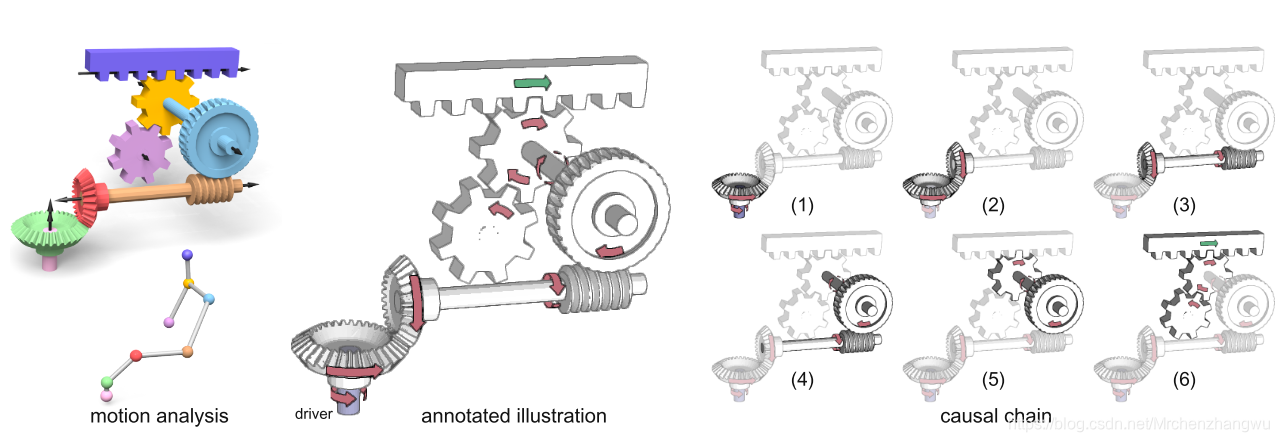
Figure 1:给定机械组件的几何模型,我们对其进行分析以推断各个零件如何移动以及如何相互影响。 关系和运动参数被编码为随时间变化的交互图。 一旦用户指示了驱动程序,我们便会计算组件的运动并使用它来生成带注释的插图,以描述组件的工作方式。 我们还产生了一个相应的因果链序列,以帮助观看者更好地在心理上对动画进行动画处理。
Abstract
可视化如何工作可视化使用各种可视技术来描绘了复杂机械组件的操作。 我们提出了一种自动方法来生成这种可视化效果。 从装配的3D CAD模型开始,我们首先根据零件的几何形状和一些用户指定的约束推断零件的运动以及零件之间的相互作用。 然后,我们使用这些信息来生成可视化效果,这些可视化效果将运动轴,帧序列和动画结合起来,以传达运动之间的因果关系以及零件之间的机械相互作用。 我们提出了各种装配的结果。
1 Introduction
机械组件是相互连接的零件的集合,例如齿轮,凸轮和杠杆,它们一起运动以实现特定的功能目标。 正如Macaulay所指出的,要实现这一目标通常需要大会将驱动力转化为运动。 例如,汽车中的变速箱是具有不同比率的互锁齿轮的集合,这些互锁齿轮将来自发动机的旋转力转换为适合车轮的转速。 了解零件如何相互作用以将驱动力转换为运动通常是了解机械组件如何工作的关键。
有两种类型的信息对于理解此转换过程至关重要:1)组件内零件的空间配置,以及2)零件之间的运动和机械相互作用的因果关系。 尽管大多数技术插图有效地传达了空间关系,但是这些可视化中只有很小一部分被设计用来强调零件之间如何移动和相互作用。 分析事物运作方式的这一子集,插图和先前的关于人们如何理解机械运动的认知心理学研究提出了几种视觉技术,用于传达机械组件中零件的运动和相互作用。
。。。。
3 Designing How Things Work Visualizations




 本文介绍了一种自动方法,用于生成复杂机械组件操作的可视化效果。从3D CAD模型出发,推断零件运动及相互作用,生成结合运动轴、帧序列和动画的可视化,展示零件间的因果关系和机械互动。
本文介绍了一种自动方法,用于生成复杂机械组件操作的可视化效果。从3D CAD模型出发,推断零件运动及相互作用,生成结合运动轴、帧序列和动画的可视化,展示零件间的因果关系和机械互动。
















 725
725

 被折叠的 条评论
为什么被折叠?
被折叠的 条评论
为什么被折叠?








